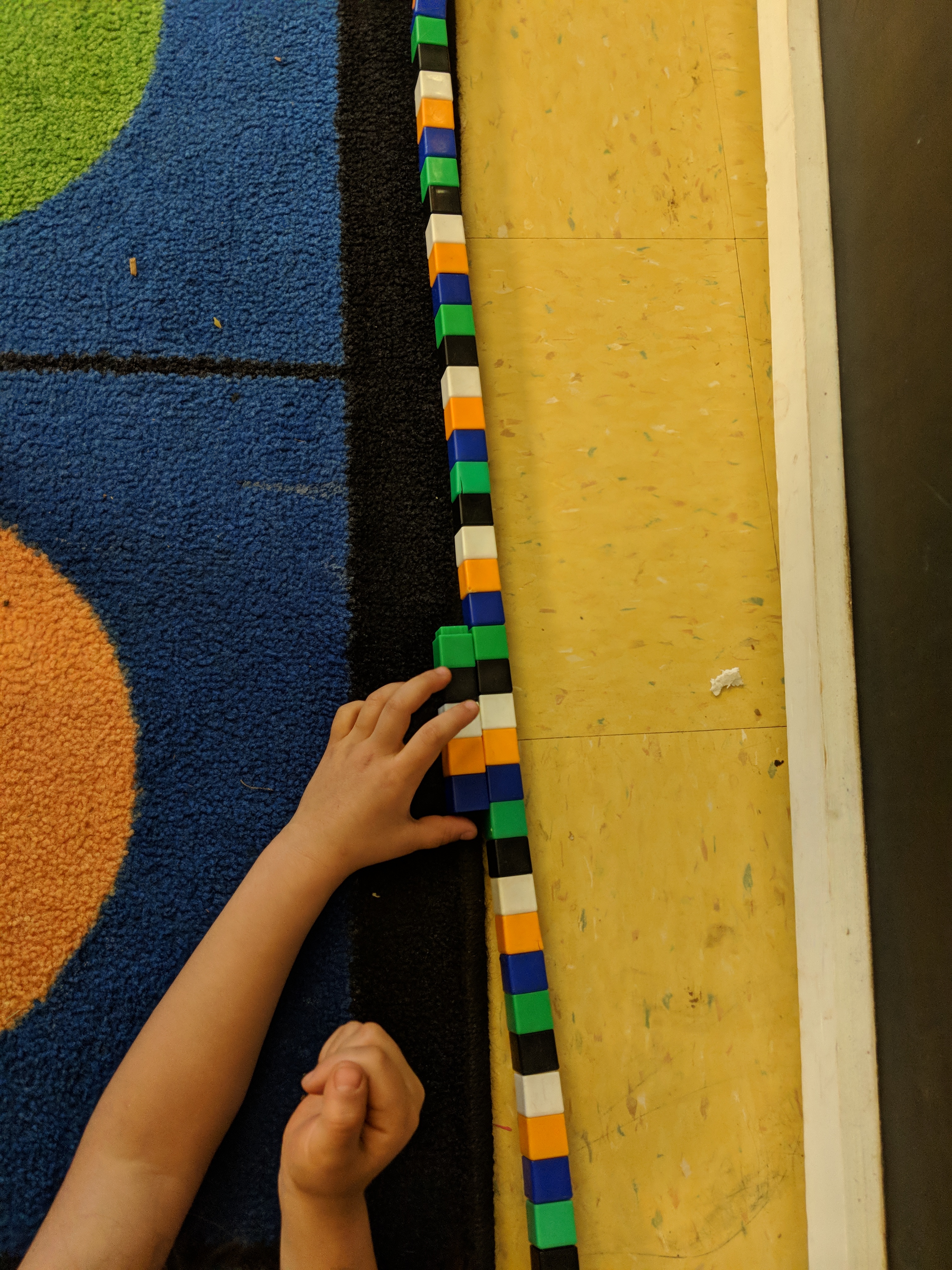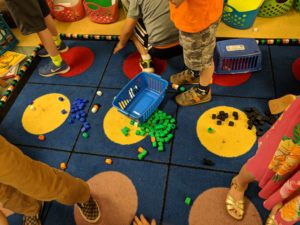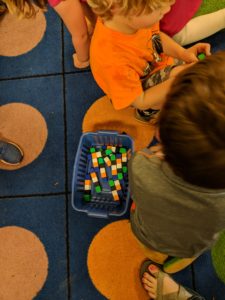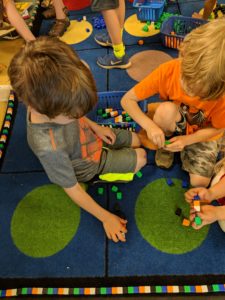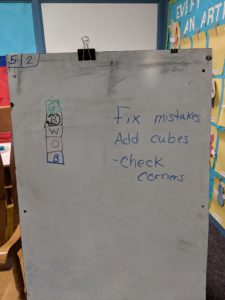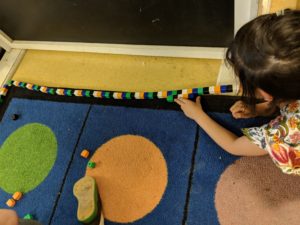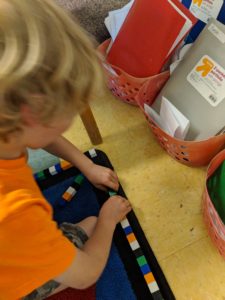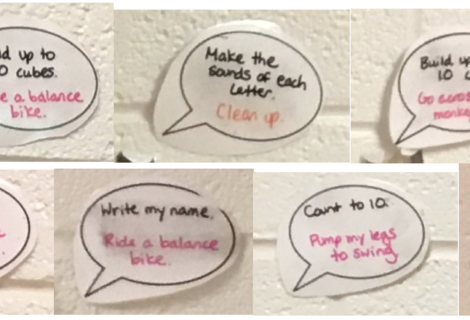Noticing an In-the-Moment Small Group Goal: The Carpet Train
The classroom is a very busy place! Students filled with lots of questions are constantly engaging with materials and posing questions about things they notice and wonder in their environment. When teachers take the time to notice what students are interested in and to listen to their naturally-occurring conversations, they can help students set in-the-moment goals individually, as a small group, or as a whole class. Teachers must ask the right questions at the right time and be ready with the materials and space necessary to accomplish these goals.
How can I encourage something I noticed?
During math workshop one day, I noticed students asking questions to no one in particular as they worked. “How many cubes would it take to go all the way around the carpet?” “I bet it would be 100…or 1 million!” They sat in conversation debating how many cubes it would take and whether it was even possible. Did we even have enough cubes to line up all the way around the carpet? After awhile, I joined in their conversation and told them they could explore all these questions during Inside Choice Time if they wanted on the next day. We talked about whether this was a goal they wanted to work on, and if it was, their first step would be to make a list of the materials they needed. They would also need a plan of when they would work on their goal.
They gave me a list of materials (colored cubes) and I gathered as many as I could find. The next day, they began working on building cubes around the carpet. They worked relentlessly and were very excited to pause their work to see how far they had gotten. At the end of Day One, they had not completed their task and asked if they could keep it out to continue work on the next day. We agreed as a class not to disturb their work.
How can I extend their learning in a specific way?
Our math unit was repeating patterns. We were identifying the cores of patterns and extending patterns. At the closure of one lesson that week, I mentioned the work this small group was doing during Inside Choice Time. I said, “I noticed you are building with cubes all the way around the carpet. That seems really interesting! I wonder if you are building your train in a pattern or not.” I did not need to say more. The next morning, when they started working on the project again, they decided to build it in a repeating pattern. They sorted all the cubes into bins by color, created cores (green-black-white-orange-blue), and started connecting the cores.
How can I give everyone the opportunity to engage in the work?
At this point, about three-fourths of the class had engaged in building a cube train. During Inside Choice Time, they had chosen to work on the “Carpet Train” (the name they gave the task). I wanted to give everyone the opportunity to work on it and to encourage those who had not chosen the task yet. I met with my math specialist who prompted me to open this as a task during math workshop. She encouraged me to make a list of things that still needed to be done with the train and ways that students could write or draw about things they noticed.
I made the Carpet Train a must-do task during math workshop and gave everyone the chance to work on the task. We created a list of work to be completed: fix mistakes (found every time someone sat on the carpet), add more cubes, and double-check the corners. Each student who went to the task worked on it in a different way. The work took about a week, and when they met their goal, we had a celebration and invited other students and teachers to see the work. This in-the-moment goal sparked students’ desire to intentionally set other goals and to work collaboratively to meet their goals. This in-the-moment goal also created a new context for students to deliberately practice and extend their repeating pattern skills.
Take two minutes to reflect:
- What are you noticing as you pause to listen and watch your students work and play?
- What are your students wondering?
- How can you encourage something you noticed? What questions can you ask? What materials and space can you provide?
- How can you extend their learning in a specific way to align with your learning goals?
- How can you give everyone in your class the opportunity to engage in the work of a small group of students?
Take two minutes to make a plan:
- What will you do next to encourage something you have noticed?
Interested in learning more about how to make noticing a habit? Read our blog from November 9, 2018: Taking the Time to Notice.
Want to share your students’ in-the-moment goals, ask a question about noticing, or get ideas for how to encourage something specific you’ve noticed? Email us at mathplusliteracy@gmail.com.
